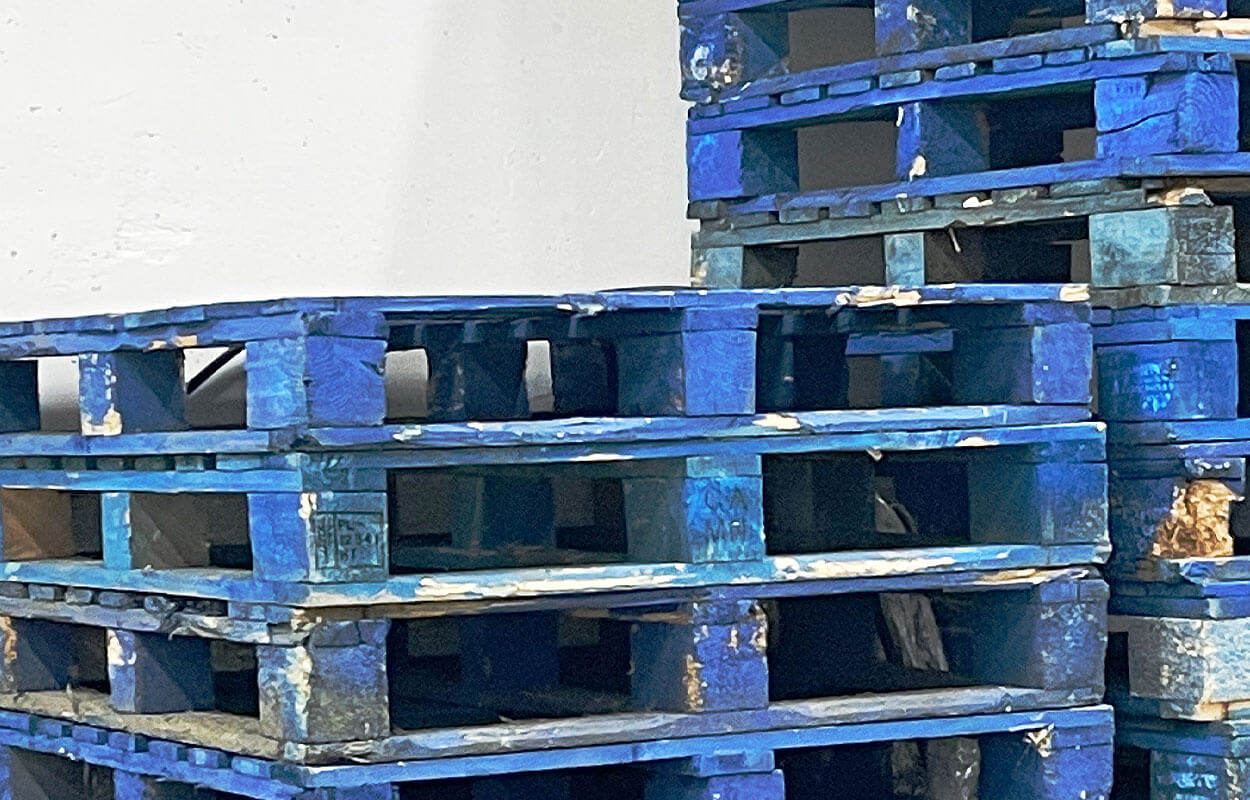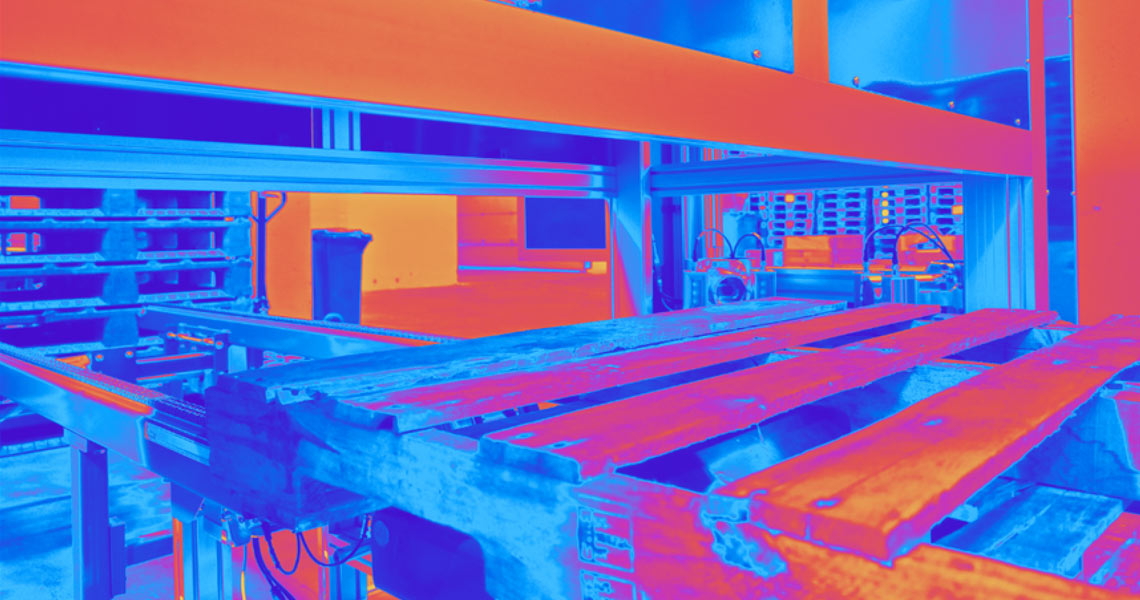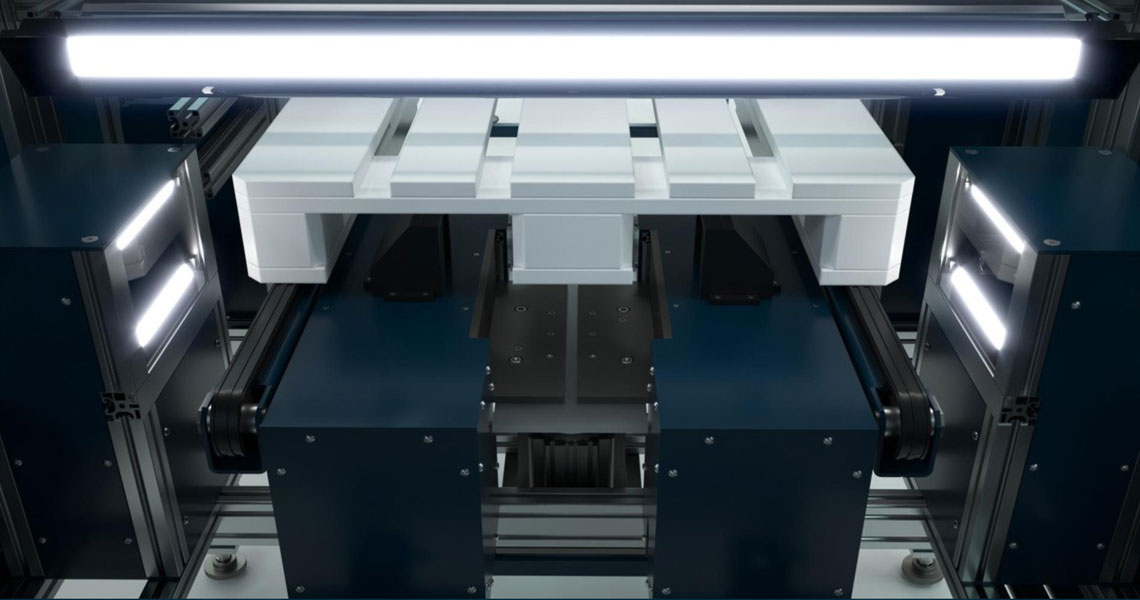Pallet Background – United States With approximately 400 million new wooden pallets produced in the United States every year and around 2 billion in use at any given time in the country, pallets are nearly ubiquitous in retail stores,...
Pallet Background – United States
With approximately 400 million new wooden pallets produced in the United States every year and around 2 billion in use at any given time in the country, pallets are nearly ubiquitous in retail stores, warehouses, and manufacturing facilities.
Pallets have long provided an ideal shipping platform for manufacturers and retailers in the logistics chain.
Pallets are designed and built to be sturdy shipping platforms and can be repaired numerous times. However, after being handled in tough environments, they are often discarded after a few uses or when it is no longer economically viable to repair them (especially true of stringer pallets).
Wood pallets are a very sustainable type of packaging since they are easily recycled and repaired and can be used multiple times. Essentially, no trees are cut down to make new pallets; pallet stock typically comes from the lower-value parts of trees that are primarily harvested for dimensional lumber, millwork, etc.
Pallets made in the U.S. can contain either hardwoods or softwoods and are made from a variety of different wood species such as pines from the South or oaks from Pennsylvania. If you are lucky, you might even see a pallet with tropical hardwoods!
Types of U.S. Pallets
There are two basic formats for wood pallets: the block pallet and the stringer pallet. Block pallets are generally much sturdier than stringer pallets, designed to carry heavier loads, and have a longer lifespan. A distinguishing factor with block pallets is the “block” of wood seen at each corner of the pallet. Stringer pallets are cheaper to make (using lower quality boards) and, on average, do not last as long (see photo below). Individuals are thus more likely to encounter broken stringer pallets that have been discarded or are being given away.
Marvels of Design and Innovation
Pallets may seem like simple combinations of wood and nails, but they are marvels of design and innovation. The fact that they are built to carry thousands of pounds of goods across the country or around the world reflects the strength of the materials used to build them. This strength can help make cool and durable items such as wine racks, bed frames, or compost bins, but it can also present a challenge when trying to dismantle a pallet from its original form.
PALLETAI improves the quality of pallet inspection
IVISYS PALLETAI relieves limited resources from the heavy and tedious work of sorting pallets. It helps you improve pallet quality and reduces the number of claims linked to defective or damaged used pallets. Moreover, which is vital to your success, our PALLETAI helps improve your employees’ safety and health.
PALLETAT delivers improved quality levels compared to mechanical checking systems while allowing more pallet types in the same machine with fewer maintenance needs. Furthermore, PALLETAI is adaptable to your existing production line and enables scalable improvement in your production. Additionally, the PALLETAI ensures high-speed pallet inspection, rejection, and sorting based on defect types such as protruding nails, cracks in boards and blocks, missing, broken or dislocated boards or blocks, blocked tunnels, logo detection and verification (including iPAL QR codes, etc.), paper and plastic residue, and sorting based on appearance.
Pallet Safety and Warehouse Efficiency
Discarded pallets often have broken deck boards and may also have protruding nails. Extra care should be taken when handling such pallets to avoid puncture wounds; use thick gloves and never stand on a pallet or jump on one to break it up. Be especially wary of rusty nails that could cause injuries requiring medical treatment.
Block pallets can be heavy and often tip the scales at 50 lbs or more. Many of the injuries we reviewed were caused by over-exertion; soft-tissue injuries such as back strains are often caused when someone attempts to lift and/or move a heavy pallet on their own. Many other injuries occurred to feet or ankles when a pallet was accidentally dropped or fell onto a foot. We suggest that everyone take precautions and use proper lifting techniques, and if possible, ask someone for help when moving pallets.
Treated pallets are rare but deserve extra caution. A relatively small number of pallets are chemically treated to eliminate insects and parasites. Any pallet that is going to travel between countries must have a treatment stamp, even if no treatments have been applied (heat treatment is an option that poses no risks to humans). There are a few different chemical treatment types, some of which are no longer used, but you may still encounter an older pallet with one of these stamps. All stamps consist of a two-letter code that indicates the type of treatment applied; there are five possible treatment stamps commonly in use.
The treatment designation that you should be most cautious of is “MB.” This stands for Methyl Bromide. Pallets with an MB stamp have been treated with a highly toxic pesticide that can be necessary in certain regions of the world where there are pests that can’t be eliminated by heat treatments. You should never use pallets with an MB stamp for any home project, nor should they be burned. It is very unlikely that you would encounter a pallet treated with methyl bromide, but if you do see one, it is best to avoid any contact. You should assume that any painted pallet is owned by one of the large pallet rental companies. The most common colors seen in the U.S. are red (PECO) and blue (CHEP). These pallets are never discarded by their owners, and it is technically illegal for them to be used in noncommercial applications. If you encounter a painted pallet, you should not use it for personal purposes. But if you do obtain one, look for the toll-free number on the pallet so you can contact the owner for instructions to return it.

Recommendations for Handling Pallets
There are a few basic recommendations to keep in mind when considering personal use of pallets: Be careful when carrying pallets since they can be heavy, and muscle strains are a common source of injury, as are foot injuries from dropping a pallet on oneself. The nails used to construct pallets are of a special design and can be very difficult to remove. Extra care should be taken when trying to pull out nails from a pallet or pry apart boards. Be very careful when using a saw to deconstruct a pallet; if the saw blade hits a nail, you could suffer from a kick-back injury. Knots can also be dangerous, and some hardwood species, especially when wet, are difficult to saw through. Follow best practices for safety whenever using power equipment to deconstruct a pallet or when building items from pallets. This includes using proper PPE (personal protective equipment) such as eye protection and a mask to avoid breathing in wood dust when sawing or sanding. Never jump on or kick a pallet to break it apart. This often results in lower extremity injuries such as cuts or twisted ankles. Given the unknowns regarding what a pallet may have been exposed to, we recommend not using pallet wood for cutting boards. Look for a stamp burned into the wood. Do not use pallets with an “MB” stamp for any purpose. Never burn any treated wood products, whether they be pallet parts or treated lumber. Used pallets are widely available for little or no cost, and the wood in pallets can serve a variety of purposes. Whether it is the whole pallet or just component parts, they have become popular choices for a wide variety of creative projects ranging from furniture to dog houses. Many DIY projects require the pallet to be cut into pieces or component parts, and this “deconstruction” phase is where accidents often occur.Stay safe by securing the quality of the pallet.
Sources:
Michael, J.H. Brand Ambassador for IVISYS
Article by Michael, J.H., Penn State University, “Be Safe Around Wooden Pallets!”, May 2021
[1] See Michael, J.H. and S. Gorucu. 2020. “Non-occupational Injuries caused by Transport Packaging: residential and retail hazards”. Journal of Safety Research, Vol 76, 9-15.
The post IVISYS PalletAI keeps you and your employees safe. appeared first on IVISYS.












